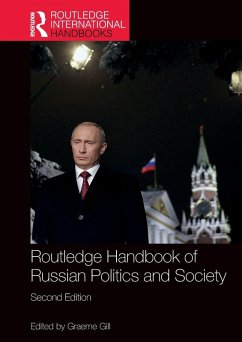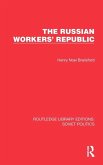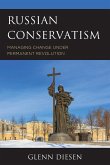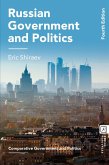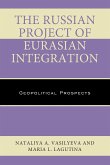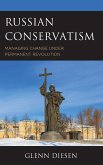This second edition of the highly respected Routledge Handbook of Russian Politics and Society both provides a broad overview of the area and highlights cutting-edge research into the country.
Through balanced theoretical and empirical investigation, each chapter examines both the Russian experience and the existing literature, identifies and exemplifies research trends, and highlights the richness of experience, history, and continued challenges inherent to this enduringly fascinating and shifting polity. Politically, economically, and socially, Russia has one of the most interesting development trajectories of any major country. This Handbook answers questions about democratic transition, the relationship between the market and democracy, stability and authoritarian politics, the development of civil society, the role of crime and corruption, the development of a market economy, and Russia's likely place in the emerging new world order.
Providing a comprehensive resource for scholars, students, and policy makers alike, this book is an essential contribution to the study of Russian studies/politics, Eastern European studies/politics, and International Relations.
Through balanced theoretical and empirical investigation, each chapter examines both the Russian experience and the existing literature, identifies and exemplifies research trends, and highlights the richness of experience, history, and continued challenges inherent to this enduringly fascinating and shifting polity. Politically, economically, and socially, Russia has one of the most interesting development trajectories of any major country. This Handbook answers questions about democratic transition, the relationship between the market and democracy, stability and authoritarian politics, the development of civil society, the role of crime and corruption, the development of a market economy, and Russia's likely place in the emerging new world order.
Providing a comprehensive resource for scholars, students, and policy makers alike, this book is an essential contribution to the study of Russian studies/politics, Eastern European studies/politics, and International Relations.
"Knowledge and understanding of Russian society and its political trajectories have seldom been more important than they are today. Graeme Gill, a highly respected and insightful Russian expert, has brought together, in this Handbook of remarkable scope, an outstanding international team of specialists who illuminate almost every aspect of post-Communist Russia "
Archie Brown, University of Oxford, UK, and author of The Rise and Fall of Communism
"This timely update provides a comprehensive and authoritative guide to Russian politics. Gill has brought together many of the world's leading experts in a single volume, who are able to provide a state-of-the-art overview of current knowledge on their topic. An outstanding and indispensable contribution to Russian studies."
Brian D. Taylor, Syracuse University, USA
"This book combines excellent scholarship from the leading experts in the field of Russian politics and society with a broad and almost exhaustive range of addressed topics. Undoubtedly, this nuanced overview presented so nicely will be a useful read for both newbies and academics who specialise on Russia."
Guzel Yusupova, SCRIPTS, Berlin, Germany
Archie Brown, University of Oxford, UK, and author of The Rise and Fall of Communism
"This timely update provides a comprehensive and authoritative guide to Russian politics. Gill has brought together many of the world's leading experts in a single volume, who are able to provide a state-of-the-art overview of current knowledge on their topic. An outstanding and indispensable contribution to Russian studies."
Brian D. Taylor, Syracuse University, USA
"This book combines excellent scholarship from the leading experts in the field of Russian politics and society with a broad and almost exhaustive range of addressed topics. Undoubtedly, this nuanced overview presented so nicely will be a useful read for both newbies and academics who specialise on Russia."
Guzel Yusupova, SCRIPTS, Berlin, Germany

